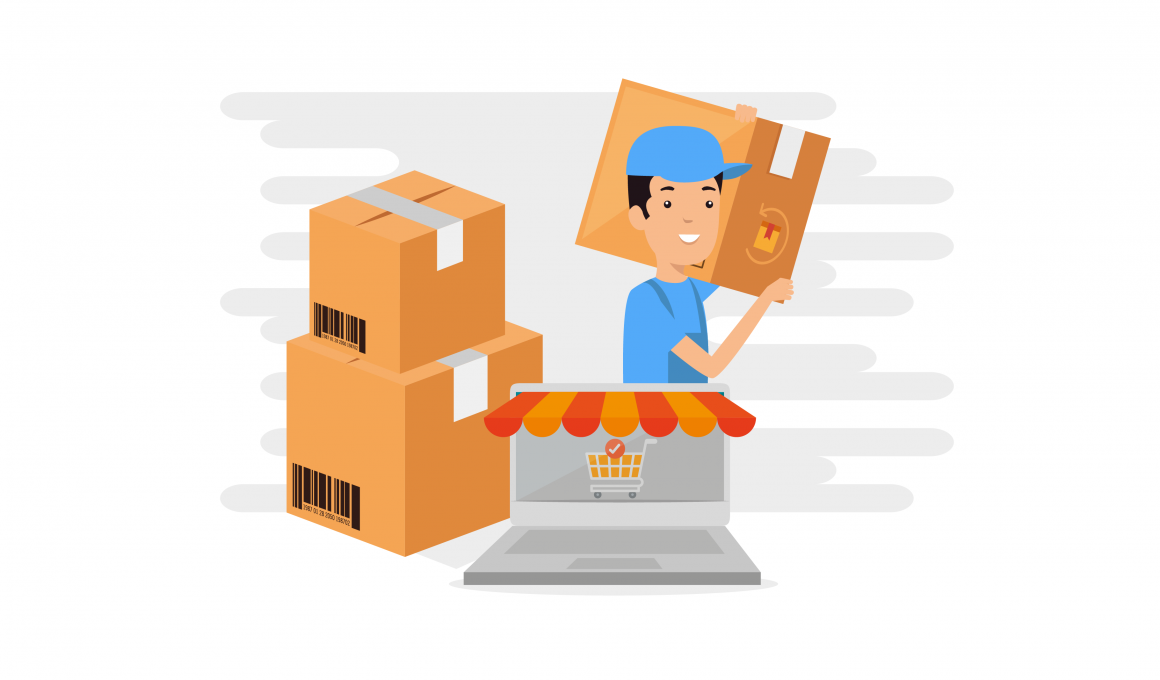Your Holiday sales earning 2019 hit it out of the park. Just when you bring out the special-occasion-wine to celebrate, you are hit by the first wave of holiday returns. What follows is a tornado of chaos and confusion juggling an outrageous number of returns from your online buyers.
A recent study conducted by Appriss Retail showed that the average return rate was 12.9% for Holidays 2018. In another survey conducted by the NRF, the Holiday Return rate 13% wherein the product was returned after Christmas.
A shopping survey conducted by WalletHub revealed category wise return rates.
What’s all the fuss about holiday package returns?
Holiday package returns are inevitable. No matter how well you design your product page, a handful of shoppers are going to return orders. It is paramount that you have a sound return strategy in place. A return strategy is one which has the following 3 elements:
- Easy return policy
- Free return shipping
- Efficient Return-order management
Even with all these three functions laid out, dissected, mulled over and finally well planned, execution is still challenging
When Returns burn a hole in your pocket
Returns are not just chaotic they are expensive too.
Sample this: Say your customer orders a bottle of Wine. Total Cost : $32.43
You use express shipping. Shipping cost: $17.48. Unfortunately, your customer decides to return the order. Return shipping cost: $14.13. Is that all? Of course, the wine goes bad by the time it reaches you. The total cost incurred: $64
The first one is, of course, the handling and shipping charges which affect the profit margin.
The second one is the decrease in the value of the returned product. The depreciation of a product depends on the category of the product and the time it is unavailable for sale.
And we did not consider the restocking fee or the refund fee or the salary of the resources handling the transaction.
Returns are expensive and chaotic. But with the right strategy and process in place, you can breeze through your returns.
Manage Holiday Package Returns like a Pro
Brand image and repeat sales of your business depends on how well you handle the Holiday returns
Here are the 10 best practices to handle the rush of Holiday Returns 2019:
- A clear and easy return policy
92% of consumers will purchase again if the returns are easy. This clearly shows how the purchases depend on the return policy of a business. your return policy should be simple and clear. It should mention deadlines and the procedures of the returns. Make refunds easy.
Another vital point here is that the return policy should be easy to find on your web page as well as in the FAQ section. If possible make it a fun read with loads of illustration. Kitteh box’s return policy is too cute to ignore. Moreover, the return policy is consistent with the rest of the brand messaging.
- Accurate product specification:
Most times, a customer returns an item due to mismatched expectations. The greatest challenge for an online seller to provide as much information as possible to make up for the lack of tactile experience.
The sellers need to invest a great deal of effort to specify even minute details. Wrong pictures and inaccurate information on the product can lead to an increase in the return rates.
- Avoid clumsy packaging :
One of the primary reasons for returns is damaged delivery. To avoid this, it is imperative to make sure that the packaging of the products is done properly. Make sure not to scrimp on the size of your box. If your product is delicate or easily breakable, make sure to use one of the following packing materials:
- Packaging foam
- Bubble wrap
- Padding dividers
- Polystyrene packing peanuts
- Shredded paper
- Inspect items before shipping:
Quality Control Check has to be done before shipping the item. Quality control ensures that the quality of product shipped out aligns with the customer order specification as well as your brand image.
Remember to include a packing slip. Packing slip lists down all the items to be shipped along with the name and address of the recipient. It also helps the customer reconcile the number of orders received with ease.
Inspecting the merchandise prior to shipping eliminates the likelihood of delivering the wrong order, faulty item or incomplete package. For the same reason, a well-inspected order reduces the chances of return.
- Ensure on-time delivery:
Holiday rush clogs the delivery queues and orders are delivered later than usual. But receiving gifts a day or two after Christmas is a major party spoiler. While holiday sales are promoted with loads of glitz, glam and feverish enthusiasm bordering on spam — When it comes to delivery promise retailers adopt a laissez-faire attitude. This inevitably leads to customer service meltdown.
Check out the tweets from dissatisfied customers:
Best practices to ensure customers are not let down by delivery experience
- Promise only when you plan on keeping it: If Next day delivery is impossible or a stretch, replace it with a 2-day delivery option. Set a reasonable expectation and deliver on it.
- Research about customer base: Where are your customers? Are they primarily from the east coast? Then adopt a different shipping and distribution strategy for orders placed from the west coast. Ensure a failproof order fulfillment process for all orders from EastCoast.
- Negotiate with shipping carrier: Shipping tariff agreement is tricky. They are complex and near impossible to validate. UPS or FedEx have massive data and statistics about your frequent shipping destination. This gives them an edge while drawing a tariff agreement. Agreeing to a fixed rate and delivery time with your shipping carrier will help you in setting realistic delivery promises.
- Claim your money-back: Every time a package delivery is delayed, FedEx and UPS offer the entire shipping costs in the form of refunds. You can read more about the FedEx money guarantee and UPS money guarantee. AuditShipment helps businesses to automatically recover their shipping costs for delivery exceptions. Enlist an automated audit service to optimize your shipping costs.
- Real-time tracking and updates to the customer:
Incorrect tracking information can lead to customer dissatisfaction and delay in delivery. Since customers expect the item to be delivered within the specified time, it is important to let the customer access real-time tracking and regular updates of the status of delivery of the product. The more engaged a customer is during the last-mile delivery of the order, the lower is the WISMO anxiety. Frustrated customers who are incognito of their order’s location are more likely to place a return.
Here are a few Shopify apps that lets you keep your customer informed at all times:
ShippingChimp : ShippingChimp’s post-purchase technology empowers Shopify customers to predict delivery issues for FedEx, UPS, USPS, and 20 other shipping partners, automate customized delivery notifications and craft a branded order-fulfillment journey. It integrates with your Shopify store with a single click.
AfterShip: This is a real-time shipment tracking app. It tracks FedEx, UPS and DHL shipments on a single platform. Aftership facilitates setting email delivery alerts and notifications to keep your customer informed.
Order LookUp: This app offers real-time order tracking along with email notification features. It reduces customer inquiries to your support team significantly.
Trackr : Another real-time order tracking app for your Shopify store. In addition to order tracking, Trackr offers a branded tracking page that enhances customer engagement.
- Proactive customer support and service:
Reaching out to customers even before they place an inquiry can boost your customer satisfaction rating. With the right suite of tools, customer support agents can be trained to handle multiple scenarios and provide resolutions that can easily help in reducing holiday returns.
There are several ways proactive customer support can help a customer. If there was a mistake in shipping the product or delivery, contacting the customer and asking for an apology can ease out the situation. In case of customer inquiries returning merchandise, an offer to exchange the product instead of taking a refund can eventually help both the parties.
- Lost and damage management to send replacements quicker:
Online retailers need to make quick arrangements to send replacements in case of lost or damaged product scenarios. Lost and damaged orders can wreck the customer delivery experience. Although FedEx and UPS have provisions to claim for lost or damaged orders, the process is long-drawn. The turnaround time for receiving damaged and lost notification from FedEx or UPS is too long. By then the customer makes the switch to your competitor.
A lost and damage order plugin allows online buyers to inform you about the loss or damages almost instantly. This reduces the time wasted in filling out online forms or waiting hours to get to a representative.
- Offer exchanges:
Exchange of products is any time better than the return of a product as it reduces the cost incurred by the company for shipping and handling. Offering exchange as an option can help both parties alike. Exchanges ensure that a customer continues to engage with your brand despite a less than perfect first impression.
- Investigate measure and optimize return policy iteratively:
A company needs to continuously upgrade its return policy to reduce costs and losses associated with it. Therefore, it needs to constantly investigate the process to categorize the type of returns, the value of order returned and total revenue loss due to returns. Clear information, refund or credit options, free shipping for returns, and good packaging are essential to ensure an effective return policy.
Unless you are the Beetles, chaos cannot be your friend. Especially chaos caused due to returns. Incorporating a systematic process and policy for handling returns, will go a long way in bettering your customer experience.






